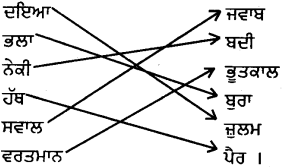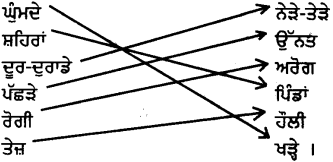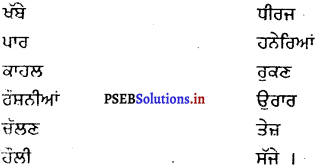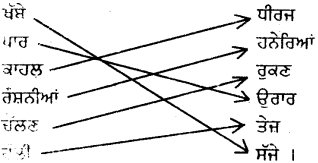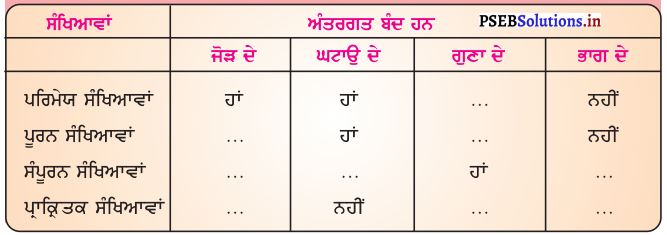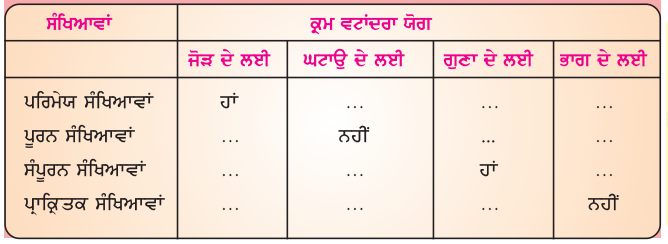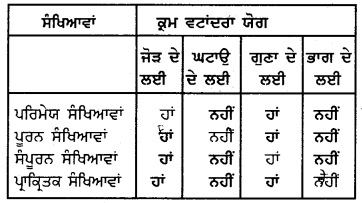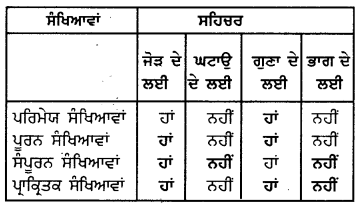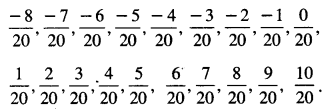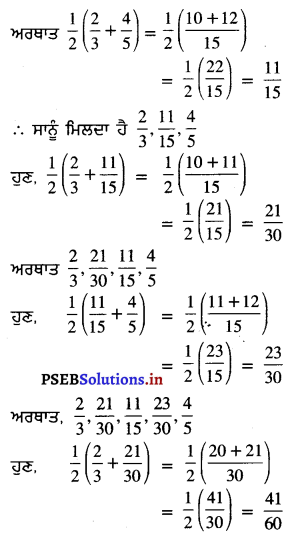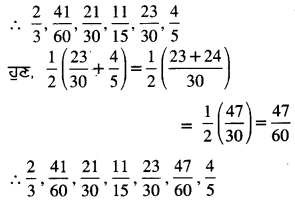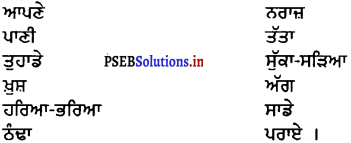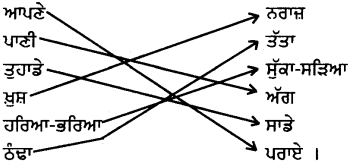Punjab State Board PSEB 6th Class Punjabi Book Solutions Chapter 15 ਤਿੰਨ ਇਨਕਲਾਬੀ-ਸ਼ਹੀਦ ਭਗਤ ਸਿੰਘ, ਰਾਜਗੁਰੂ ਤੇ ਸੁਖਦੇਵ Textbook Exercise Questions and Answers.
PSEB Solutions for Class 6 Punjabi Chapter 15 ਤਿੰਨ ਇਨਕਲਾਬੀ-ਸ਼ਹੀਦ ਭਗਤ ਸਿੰਘ, ਰਾਜਗੁਰੂ ਤੇ ਸੁਖਦੇਵ (1st Language)
Punjabi Guide for Class 6 PSEB ਤਿੰਨ ਇਨਕਲਾਬੀ-ਸ਼ਹੀਦ ਭਗਤ ਸਿੰਘ, ਰਾਜਗੁਰੂ ਤੇ ਸੁਖਦੇਵ Textbook Questions and Answers
ਤਿੰਨ ਇਨਕਲਾਬੀ-ਸ਼ਹੀਦ ਭਗਤ ਸਿੰਘ, ਰਾਜਗੁਰੂ ਤੇ ਸੁਖਦੇਵ ਪਾਠ-ਅਭਿਆਸ
1. ਦੱਸੋ :
(ੳ) ਭਗਤ ਸਿੰਘ, ਰਾਜਗੁਰੂ ਅਤੇ ਸੁਖਦੇਵ ਦਾ ਜਨਮ ਕਦੋਂ ਤੇ ਕਿੱਥੇ ਹੋਇਆ? ਇਹਨਾਂ ਦੇ ਮਾਤਾ ਪਿਤਾ ਦਾ ਕੀ ਨਾਂ ਸੀ?
ਉੱਤਰ :
ਸ: ਭਗਤ ਸਿੰਘ ਦਾ ਜਨਮ 1907 ਚੱਕ ਨੰ: 105, ਜ਼ਿਲ੍ਹਾ ਲਾਇਲਪੁਰ ਪਾਕਿਸਤਾਨ) ਵਿਚ ਹੋਇਆ। ਉਸ ਦੇ ਪਿਤਾ ਦਾ ਨਾਂ ਸ: ਕਿਸ਼ਨ ਸਿੰਘ ਤੇ ਮਾਤਾ ਦਾ ਨਾਂ ਵਿੱਦਿਆਵਤੀ ਸੀ। ਸੁਖਦੇਵ ਦਾ ਜਨਮ 1907 ਵਿਚ ਲੁਧਿਆਣੇ ਵਿਚ ਹੋਇਆ। ਉਸ ਦੇ ਪਿਤਾ ਦਾ ਨਾਂ ਲਾਲਾ ਰਾਮ ਲਾਲ ਥਾਪਰ ਤੇ ਮਾਤਾ ਦਾ ਨਾਂ ਰਲੀ ਦੇਵੀ ਸੀ। ਰਾਜਗੁਰੂ ਦਾ ਜਨਮ 1908 ਵਿਚ ਪਿੰਡ ਖੁੱਡ, ਜ਼ਿਲ੍ਹਾ ਪੂਨਾ ਮਹਾਂਰਾਸ਼ਟਰ ਵਿਚ ਹੋਇਆ ਉਸ ਦੇ ਪਿਤਾ ਦਾ ਨਾਂ ਸ੍ਰੀ ਨਰੈਣ ਹਰੀ ਰਾਜਗੁਰੂ ਤੇ ਮਾਤਾ ਦਾ ਨਾਂ ਪਾਰਬਤੀ ਬਾਈ ਸੀ।
(ਅ) ਭਗਤ ਸਿੰਘ ਤੇ ਸੁਖਦੇਵ ਬਚਪਨ ਵਿੱਚ ਹੀ ਕਿਵੇਂ ਦੋਸਤ ਬਣ ਗਏ ਸਨ?
ਉੱਤਰ :
ਸ: ਭਗਤ ਸਿੰਘ ਦੇ ਚਾਚਾ ਅਜੀਤ ਸਿੰਘ ਦੁਆਰਾ ਚਲਾਈ ‘ਪਗੜੀ ਸੰਭਾਲ ਜੱਟਾ ਦਾ ਮੁੱਖ ਟਿਕਾਣਾ ਸੁਖਦੇਵ ਦੇ ਤਾਏ ਚਿੰਤ ਰਾਮ ਦੀ ਦੁਕਾਨ ਸੀ। ਸ: ਭਗਤ ਸਿੰਘ ਆਪਣੇ ਦਾਦਾ ਜੀ ਅਰਜਨ ਸਿੰਘ ਨਾਲ ਇਸ ਦੁਕਾਨ ਉੱਤੇ ਅਕਸਰ ਜਾਂਦੇ ਹੁੰਦੇ ਸਨ। ਵੱਡਿਆਂ ਦੀ ਸਾਂਝ ਸਦਕਾ ਸ: ਭਗਤ ਸਿੰਘ ਤੇ ਸੁਖਦੇਵ ਦੀ ਬਚਪਨ ਵਿਚ ਦੋਸਤੀ ਹੋ ਗਈ।

(ਇ) ਤਿੰਨਾਂ ਇਨਕਲਾਬੀ ਸ਼ਹੀਦਾਂ ਨੇ ਪਹਿਲਾਂ ਕਿਸ ਅੰਗਰੇਜ਼ ਅਫ਼ਸਰ ਨੂੰ, ਕਿਉਂ ਮਾਰਿਆ ਸੀ?
ਉੱਤਰ :
ਤਿੰਨਾਂ ਇਨਕਲਾਬੀ ਸ਼ਹੀਦਾਂ ਨੇ ਪਹਿਲਾਂ ਅੰਗਰੇਜ਼ ਅਫ਼ਸਰ ਸਾਂਡਰਸ ਨੂੰ ਮਾਰਿ ਕਿਉਂਕਿ ਉਹ ਵੀ ਲਾਲਾ ਲਾਜਪਤ ਉੱਤੇ ਲਾਠੀਚਾਰਜ ਕਰਾਉਣ ਦਾ ਦੋਸ਼ੀ ਸੀ।
(ਸ) ਤਿੰਨਾਂ ਇਨਕਲਾਬੀਆਂ ਨੇ ਆਜ਼ਾਦੀ ਦੀ ਲੜਾਈ ਲੜਨ ਲਈ ਕਿਹੜੀ ਸੰਸਥਾ ਬਣਾਈ ਸੀ?
ਉੱਤਰ :
ਹਿੰਦੁਸਤਾਨ ਸੋਸ਼ਲਿਸ਼ਟ ਰਿਪਬਲਿਕ ਪਾਰਟੀ।
(ਹ) ਇਹ ਇਨਕਲਾਬੀ ਯੋਧੇ ਆਪਣੇ ਆਪ ਨੂੰ ਕਿਹੜੀ ਕੈਦੀ ਦੱਸਦੇ ਸਨ। ਉਹਨਾਂ ਨੇ ਮੌਕੇ ਤੇ ਗਵਰਨਰ ਨੂੰ ਕੀ ਲਿਖਿਆ ਸੀ?
ਉੱਤਰ :
ਤਿੰਨੇ ਇਨਕਲਾਬੀ ਯੋਧੇ ਆਪਣੇ ਆਪ ਨੂੰ ਜੰਗੀ ਕੈਦੀ ਦੱਸਦੇ ਸਨ। ਉਨ੍ਹਾਂ ਮੌਕੇ ਦੇ ਗਵਰਨਰ ਨੂੰ ਲਿਖਿਆ ਕਿ ਉਹ ਉਨ੍ਹਾਂ ਨੂੰ ਜੰਗੀ ਕੈਦੀ ਮੰਨ ਕੇ ਫਾਂਸੀ ਨਾ ਦੇਣ, ਸਗੋਂ ਗੋਲੀਆਂ ਨਾਲ ਉਡਾਉਣ !
(ਕ) ਅੰਗਰੇਜ਼ ਹਕੂਮਤ ਨੇ ਤਿੰਨਾਂ ਦੇਸ-ਭਗਤਾਂ ਨੂੰ ਕਦੋਂ ਫਾਂਸੀ ਦਿੱਤੀ ਸੀ?
ਉੱਤਰ :
ਅੰਗਰੇਜ਼ ਹਕੂਮਤ ਨੇ ਤਿੰਨਾਂ ਦੇਸ਼-ਭਗਤਾਂ-ਭਗਤ ਸਿੰਘ, ਸੁਖਦੇਵ ਤੇ ਰਾਜਗੁਰੂ ਨੂੰ 23 ਮਾਰਚ, 1931 ਨੂੰ ਫਾਂਸੀ ਦਿੱਤੀ ਸੀ।
(ਖ) ਭਗਤ ਸਿੰਘ ਨੇ ਫਾਂਸੀ ਤੋਂ ਕੁਝ ਦਿਨ ਪਹਿਲਾਂ ਕੀ ਵਿਚਾਰ ਪ੍ਰਗਟ ਕੀਤੇ ਸਨ?
ਉੱਤਰ :
ਭਗਤ ਸਿੰਘ ਨੇ ਕਿਹਾ ਸੀ, ‘‘ਜਦੋਂ ਹਿੰਦੁਸਤਾਨੀ ਲੁੱਟ-ਖਸੁੱਟ, ਬੇਇਨਸਾਫ਼ੀ, ਜਾਤ-ਪਾਤ, ਨਾ-ਬਰਾਬਰੀ, ਅੰਧ-ਵਿਸ਼ਵਾਸ ਤੇ ਹੋਰ ਸਮਾਜਿਕ ਬੁਰਾਈਆਂ ਤੋਂ ਮੁਕਤ ਹੋ ਕੇ ਅਜ਼ਾਦੀ ਦਾ ਅਨੰਦ ਮਾਣਨ ਲੱਗ ਪੈਣਗੇ, ਤਾਂ ਅਸੀਂ ਸਮਝਾਂਗੇ ਕਿ ਸਾਡੀ ਛੋਟੀ ਜਿਹੀ ਜ਼ਿੰਦਗੀ ਦਾ ਮੁੱਲ ਪੈ ਗਿਆ ਹੈ ਤੇ ਸਾਡੇ ਸੁਪਨੇ ਸਾਕਾਰ ਹੋ ਗਏ ਹਨ।
2. ਹੇਠ ਲਿਖੇ ਸ਼ਬਦਾਂ ਨੂੰ ਵਾਕਾਂ ਵਿੱਚ ਵਰਤੋ :
ਸ਼ਹੀਦ, ਹਾਣੀ, ਸਾਂਝ, ਫਾਂਸੀ, ਕੁਰਬਾਨੀ, ਲਾਠੀਚਾਰਜ, ਸੂਰਬੀਰ
ਉੱਤਰ :
- ਸ਼ਹੀਦ (ਜਾਨ ਦੀ ਕੁਰਬਾਨੀ ਕਰਨ ਵਾਲਾ)-ਸ: ਭਗਤ ਸਿੰਘ ਦੇਸ਼ ਦਾ ਮਹਾਨ ਸ਼ਹੀਦ ਹੈ।
- ਹਾਣੀ ਬਰਾਬਰ ਦੀ ਉਮਰ ਦਾ ਸਾਥੀ) -ਬੱਚੇ ਆਪਣੇ ਹਾਣੀਆਂ ਨਾਲ ਖੇਡ ਰਹੇ ਹਨ।
- ਸਾਂਝ ਹਿੱਸੇਦਾਰੀ)-ਮੇਰੀ ਇਸ ਕਾਰੋਬਾਰ ਵਿਚ ਆਪਣੇ ਭਰਾ ਨਾਲ ਸਾਂਝ ਹੈ। 4. ਫਾਂਸੀ (ਫਾਹਾ)-ਜੱਜ ਨੇ ਕਾਤਲ ਨੂੰ ਫਾਂਸੀ ਦੀ ਸਜ਼ਾ ਸੁਣਾਈ॥
- ਕੁਰਬਾਨੀ (ਜਾਨ ਵਾਰਨੀ-ਸ: ਭਗਤ ਸਿੰਘ ਨੇ ਦੇਸ਼ ਦੀ ਖ਼ਾਤਰ ਆਪਣੀ ਜਾਨ ਕੁਰਬਾਨ ਕਰ ਦਿੱਤੀ।
- ਲਾਠੀਚਾਰਜ ਲਾਠੀਆਂ ਮਾਰਨੀਆਂ)-ਪੁਲਿਸ ਨੇ ਭੀੜ ਨੂੰ ਖਿੰਡਾਉਣ ਲਈ ਲਾਠੀਚਾਰਜ ਸ਼ੁਰੂ ਕਰ ਦਿੱਤਾ !
- ਸੂਰਬੀਰ ਸੂਰਮਾ, ਬਹਾਦਰ)-ਸੂਰਬੀਰ ਪੂਰੀ ਤਾਕਤ ਨਾਲ ਦੁਸ਼ਮਣਾਂ ਵਿਰੁੱਧ ਲੜੇ।

3. ਔਖੇ ਸ਼ਬਦਾਂ ਦੇ ਅਰਥ :
- ਹਕੂਮਤ : ਰਾਜ, ਸ਼ਾਸਨ, ਸਲਤਨਤ
- ਜੁਲਮ : ਅੱਤਿਆਚਾਰ
- ਇਨਕਲਾਬ : ਕ੍ਰਾਂਤੀ
- ਜਾਗਰੂਕ : ਜਾਗਣਾ, ਚੇਤੰਨ
- ਮਨੋਰਥ/ਅਕਸਦ : ਮੰਤਵ, ਇਰਾਦਾ, ਇੱਛਾ, ਉਦੇਸ਼
- ਮਨਸੂਬਾ : ਇਰਾਦਾ, ਸਕੀਮ
4. ਮੁਹਾਵਰਿਆਂ ਦੇ ਅਰਥ :
- ਸਾਇਆ ਸਿਰ ਤੋਂ ਉੱਠਣਾ : ਮਾਤਾ ਜਾਂ ਪਿਤਾ ਦੀ ਜਾਂ ਦੋਹਾਂ ਦੀ ਬਚਪਨ ਵਿੱਚ ਮੌਤ ਹੋ ਜਾਣੀ
- ਪਾਲਣ-ਪੋਸਣ ਕਰਨਾ : ਦੇਖ-ਭਾਲ ਕਰਨਾ
- ਫਾਂਸੀ ਦਾ ਰੱਸਾ ਚੁੰਮਣਾ : ਖ਼ੁਸ਼ੀ-ਖੁਸ਼ੀ ਸ਼ਹੀਦ ਹੋਣਾ
- ਹਾਹਾਕਾਰ ਮੱਚ ਜਾਣਾ : ਹਰ ਪਾਸੇ ਚੀਕ-ਪੁਕਾਰ ਹੋਣਾ
- ਸੁਪਨੇ ਸਾਕਾਰ ਹੋਣਾ : ਇੱਛਾ ਪੂਰੀ ਹੋਣਾ
- ਸਿਰ ਝੁਕਾਉਣਾ : ਸਤਿਕਾਰ ਕਰਨਾ
ਉੱਤਰ :
- ਸਾਇਆ ਸਿਰ ਤੋਂ ਉੱਠਣਾ ਮਾਤਾ ਜਾਂ ਪਿਤਾ ਦੀ ਜਾਂ ਦੋਹਾਂ ਦੀ ਬਚਪਨ ਵਿਚ ਮੌਤ ਹੋ ਜਾਣੀ-ਮਹਾਰਾਜਾ ਰਣਜੀਤ ਦੇ ਬਚਪਨ ਵਿਚ ਹੀ ਉਸ ਦੇ ਸਿਰ ਤੋਂ ਉਸ ਦੇ ਪਿਤਾ ਦਾ ਸਾਇਆ ਉੱਠ ਗਿਆ
- ਪਾਲਣ-ਪੋਸ਼ਣ ਕਰਨਾ ਪਾਲਣ ਕਰਨਾ-ਵਿਚਾਰੇ ਬਲਵੀਰ ਦੇ ਪਿਤਾ ਦੀ ਬਚਪਨ ਵਿਚ ਹੀ ਮੌਤ ਹੋ ਗਈ। ਫਿਰ ਉਸ ਦਾ ਪਾਲਣ-ਪੋਸ਼ਣ ਉਸ ਦੇ ਚਾਚੇ ਦੇ ਹੱਥਾਂ ਵਿਚ ਹੋਇਆ।
- ਫਾਂਸੀ ਦਾ ਰੱਸਾ ਚੁੰਮਣਾ ਖੁਸ਼ੀ-ਖੁਸ਼ੀ ਸ਼ਹੀਦ ਹੋਣਾ-ਸ: ਭਗਤ ਸਿੰਘ ਨੇ ਦੇਸ਼ ਦੀ ਖ਼ਾਤਰ ਫਾਂਸੀ ਦਾ ਰੱਸਾ ਚੁੰਮਿਆ ਤੇ ਆਪਣੀ ਜਾਨ ਦੀ ਕੁਰਬਾਨੀ ਦੇ ਦਿੱਤੀ।
- ਹਾਹਾਕਾਰ ਮਚਣਾ ਹਰ ਪਾਸੇ ਚੀਕ-ਪੁਕਾਰ ਹੋਣਾ-ਜਲਿਆਂ ਵਾਲੇ ਬਾਗ਼ ਵਿਚ ਹਜ਼ਾਰਾਂ ਬੇਗੁਨਾਹਾਂ ਦੇ ਮਰਨ ਨਾਲ ਸਾਰੇ ਦੇਸ਼ ਵਿਚ ਹਾਹਾਕਾਰ ਮਚ ਗਈ।
- ਸੁਪਨੇ ਸਾਕਾਰ ਹੋਣਾ (ਇੱਛਾ ਪੂਰੀ ਹੋਣਾ-15 ਅਗਸਤ, 1947 ਨੂੰ ਭਾਰਤੀਆਂ ਦੇ ਅਜ਼ਾਦੀ ਪ੍ਰਾਪਤ ਕਰਨ ਦੇ ਸੁਪਨੇ ਸਾਕਾਰ ਹੋਏ।
- ਸਿਰ ਝੁਕਾਉਣਾ ਸਤਿਕਾਰ ਕਰਨਾ)-ਮੈਂ ਸਿਰ ਝੁਕਾ ਆਪਣੇ ਵੱਡਿਆਂ ਦੀ ਕਹੀ ਗੱਲ ਮੰਨ ਲਈ !

5. ਸਮਝੇ ਤੇ ਠੀਕ ਮਿਲਾਨ ਕਰੋ :
(ੳ) ਸ਼ਹੀਦ ਭਗਤ ਸਿੰਘ, ਸੁਖਦੇਵ ਤੇ ਰਾਜਗੁਰੂ – ਲਹਿਰ
(ਅ) ਸਕਾਟ ਕੇ ਸਾਂਡਰਸ – ਜਲੂਸ
(ਇ) ਪਗੜੀ ਸੰਭਾਲ – ਕੌਮ ਤੇ ਸ਼ਹੀਦ
(ਸ) ਸਾਈਮਨ ਕਮਿਸ਼ਨ-ਗੋ ਬੈਕ – ਅੰਗਰੇਜ਼ ਅਫ਼ਸਰ
(ਹ) ਫਾਂਸੀ ਦਾ ਰੱਸਾ ਚੁੰਮਣਾ – ਨਾਹਰਾ
(ਕ) “ਇਨਕਲਾਬ-ਜ਼ਿੰਦਾਬਾਦ – ਹੱਸ ਕੇ ਮੌਤ ਕਬੂਲਣੀ
ਉੱਤਰ :

ਵਿਆਕਰਨ :
ਦੋ ਜਾਂ ਦੋ ਤੋਂ ਵੱਧ ਮੂਲ ਸ਼ਬਦਾਂ ਨੂੰ ਜੋੜ ਕੇ ਜੋ ਸ਼ਬਦ ਬਣਦੇ ਹਨ, ਉਹ ਸਮਾਸੀ ਸ਼ਬਦ ਕਹਾਉਂਦੇ ਹਨ। ਇਸ ਪਾਠ ਵਿੱਚੋਂ ਕੁਝ ਉਦਾਹਰਨਾਂ ਇਸ ਪ੍ਰਕਾਰ ਹਨ:
ਪਾਲਣ-ਪੋਸਣ, ਵਿਚਾਰ-ਵਟਾਂਦਰਾ, ਲੁੱਟ-ਖਸੁੱਟ, ਜੰਗੀ-ਕੈਦੀ
ਉੱਤਰ :
ਦੋ ਜਾਂ ਦੋ ਤੋਂ ਵੱਧ ਮੂਲ ਸ਼ਬਦਾਂ ਨੂੰ ਜੋੜ ਕੇ ਜੋ ਸ਼ਬਦ ਬਣਦੇ ਹਨ, ਉਹ ਸਮਾਸੀ ਸ਼ਬਦ ਕਹਾਉਂਦੇ ਹਨ ; ਜਿਵੇਂ-ਪਾਲਣ-ਪੋਸ਼ਣ, ਵਿਚਾਰ-ਵਟਾਂਦਰਾ, ਲੁੱਟ-ਖਸੁੱਟ, ਜੰਗੀ ਕੈਦੀ।
PSEB 6th Class Punjabi Guide ਤਿੰਨ ਇਨਕਲਾਬੀ-ਸ਼ਹੀਦ ਭਗਤ ਸਿੰਘ, ਰਾਜਗੁਰੂ ਤੇ ਸੁਖਦੇਵ Important Questions and Answers
ਪ੍ਰਸ਼ਨ –
‘ਤਿੰਨ ਇਨਕਲਾਬੀ-ਸ਼ਹੀਦ ਭਗਤ ਸਿੰਘ, ਰਾਜਗੁਰੂ ਤੇ ਸੁਖਦੇਵ ਪਾਠ ਦਾ ਸਾਰ ਲਿਖੋ।
ਉੱਤਰ :
ਸ਼ਹੀਦ ਭਗਤ ਸਿੰਘ, ਰਾਜਗੁਰੂ ਤੇ ਸੁਖਦੇਵ ਨੇ ਭਾਰਤ ਦੀ ਅਜ਼ਾਦੀ ਲਈ ਇਕੱਠਿਆਂ ਫਾਂਸੀ ਦਾ ਰੱਸਾ ਚੁੰਮਿਆ ਤੇ ਕੌਮੀ ਸ਼ਹੀਦ ਹੋਣ ਦਾ ਮਾਣ ਪ੍ਰਾਪਤ ਕੀਤਾ। ਸ: ਭਗਤ ਸਿੰਘ ਤੇ ਸੁਖਦੇਵ ਦਾ ਜਨਮ ਇੱਕੋ ਸੰਨ 1907 ਵਿਚ ਹੋਇਆ ਰਾਜਗੁਰੂ ਦਾ ਜਨਮ 1908 ਵਿਚ ਹੋਇਆ ਸ: ਭਗਤ ਸਿੰਘ ਦੇ ਪਿਤਾ ਸ: ਕਿਸ਼ਨ ਸਿੰਘ ਤੇ ਮਾਤਾ ਵਿਦਿਆਵਤੀ ਸੀ ਤੇ ਉਸ ਦਾ ਜਨਮ ਚੱਕ ਨੰ: 105 ਜ਼ਿਲ੍ਹਾ ਲਾਇਲਪੁਰ (ਪਾਕਿਸਤਾਨ) ਵਿਚ ਹੋਇਆ ਸੁਖਦੇਵ ਦਾ ਜਨਮ ਪਿਤਾ ਲਾਲਾ ਰਾਮ ਲਾਲ ਥਾਪਰ ਦੇ ਘਰ ਮਾਤਾ ਰਲੀ ਦੇਵੀ ਦੀ ਕੁੱਖੋਂ ਲੁਧਿਆਣੇ ਵਿਚ ਹੋਇਆ ਰਾਜਗੁਰੂ ਦਾ ਜਨਮ ਪਿਤਾ ਸ੍ਰੀ ਨਰੈਣ ਹਰੀ ਰਾਜਗੁਰੂ ਤੇ ਘਰ ਮਾਤਾ ਪਾਰਬਤੀ ਬਾਈ ਦੀ ਕੁੱਖੋਂ ਪਿੰਡ ਖੁੱਡ ਜ਼ਿਲ੍ਹਾ ਪੂਨਾ (ਮਹਾਰਾਸ਼ਟਰ) ਵਿਚ ਹੋਇਆ।
ਸੁਖਦੇਵ ਦੇ ਪਿਤਾ ਜੀ ਲਾਇਲਪੁਰ ਵਿਚ ਆੜ੍ਹਤ ਦੀ ਦੁਕਾਨ ਕਰਦੇ ਸਨ ਪਰ ਤਿੰਨ ਕੁ ਸਾਲ ਦੀ ਉਮਰ ਵਿਚ ਹੀ ਪਿਤਾ ਦੀ ਮੌਤ ਕਾਰਨ ਉਸ ਦਾ ਪਾਲਣ-ਪੋਸਣ ਉਸ ਦੇ ਤਾਏ ਚਿੰਤ ਰਾਮ ਜੀ ਨੇ ਕੀਤਾ। ਇਨ੍ਹਾਂ ਦਿਨਾਂ ਵਿਚ ਹੀ ਸ: ਭਗਤ ਸਿੰਘ ਦੇ ਚਾਚੇ ਸ: ਅਜੀਤ ਸਿੰਘ ਨੇ ਤੇ ਲਾਲਾ ਲਾਜਪਤ ਰਾਏ ਨੇ ਪੱਗੜੀ ਸੰਭਾਲ ਲਹਿਰ ਚਲਾਈ, ਜਿਸ ਦਾ ਮੁੱਖ ਟਿਕਾਣਾ ਚਿੰਤ ਰਾਮ ਦੀ ਦੁਕਾਨ ਸੀ। ਸ: ਭਗਤ ਸਿੰਘ ਆਪਣੇ ਦਾਦੇ ਅਰਜਨ ਸਿੰਘ ਨਾਲ ਅਕਸਰ ਇਸ ਦੁਕਾਨ ਉੱਤੇ ਆਉਂਦਾ ਹੁੰਦਾ ਸੀ।

ਵੱਡਿਆਂ ਦੀ ਸਾਂਝ ਕਾਰਨ ਸ: ਭਗਤ ਸਿੰਘ ਤੇ ਸੁਖਦੇਵ ਦੋਹਾਂ ਦੀ ਬਚਪਨ ਵਿਚ ਹੀ ਦੋਸਤੀ ਹੋ ਗਈ। ਜਵਾਨੀ ਵਿਚ ਪੈਰ ਧਰਦਿਆਂ ਹੀ ਸ: ਭਗਤ ਸਿੰਘ ਤੇ ਸੁਖਦੇਵ ਨੇ ਅਜ਼ਾਦੀ ਦੇ ਯੋਧਿਆਂ ਨਾਲ ਸੰਬੰਧ ਪੈਦਾ ਕਰਨੇ ਆਰੰਭ ਕਰ ਦਿੱਤੇ ਤੇ ਉਨ੍ਹਾਂ ਹਿੰਦੁਸਤਾਨ ਸੋਸ਼ਲਿਸ਼ਟ ਰਿਪਬਲਿਕ ਆਰਮੀ ਲਈ ਕੰਮ ਕਰਨਾ ਸ਼ੁਰੂ ਕਰ ਦਿੱਤਾ ਰਾਜਗੁਰੂ ਵੀ ਉਨ੍ਹਾਂ ਨਾਲ ਆ ਸ਼ਾਮਿਲ ਹੋਇਆ। ਇਨੀਂ ਦਿਨੀਂ ਲਾਲਾ ਲਾਜਪਤ ਰਾਏ ‘ਸਾਈਮਨ ਕਮਿਸ਼ਨ ਗੋ ਬੈਕ ਦੇ ਜਲੁਸ ਦੀ ਅਗਵਾਈ ਕਰਦੇ ਹੋਏ ਐੱਸ. ਐੱਸ. ਪੀ. ਸਕਾਟ ਦੇ ਲਾਠੀਚਾਰਜ ਦਾ ਸ਼ਿਕਾਰ ਹੋਏ ਸਨ ਤੇ ਸਿਰ ਵਿਚ ਇਕ ਲਾਠੀ ਵੱਜਣ ਕਾਰਨ ਉਨ੍ਹਾਂ ਦੀ ਮੌਤ ਹੋ ਗਈ ਸੀ।
ਤਿੰਨਾਂ ਦੋਸਤਾਂ ਨੇ ਸਕਾਟ ਤੋਂ ਲਾਲਾ ਜੀ ਦੀ ਮੌਤ ਦਾ ਬਦਲਾ ਲੈਣ ਦਾ ਫ਼ੈਸਲਾ ਕੀਤਾ। ਇਸ ਕੰਮ ਲਈ ਸ: ਭਗਤ ਸਿੰਘ, ਰਾਜਗੁਰੂ, ਸੁਖਦੇਵ, ਚੰਦਰ ਸ਼ੇਖਰ ਅਜ਼ਾਦ ਤੇ ਜੈ ਗੋਪਾਲ ਸਕਾਟ ਦੇ ਦਫ਼ਤਰ ਕੋਲ ਪੁੱਜ ਗਏ। ਪਰ ਇਸ ਸਮੇਂ ਸਕਾਟ ਦੀ ਥਾਂ ਡੀ. ਐੱਸ. ਪੀ. ਸਾਂਡਰਸ ਮੋਟਰ ਸਾਈਕਲ ਉੱਤੇ ਬਾਹਰ ਨਿਕਲਿਆ ਤੇ ਉਹ ਸ: ਭਗਤ ਸਿੰਘ ਦੀਆਂ ਗੋਲੀਆਂ ਦਾ ਸ਼ਿਕਾਰ ਹੋ ਗਿਆ।
ਇਸ ਕਤਲ ਪਿੱਛੇ ਉਨ੍ਹਾਂ ਦਾ ਮੰਤਵ ਕੇਵਲ ਖੂਨ ਦਾ ਬਦਲਾ ਖੂਨ ਲੈਣਾ ਹੀ ਨਹੀਂ ਸੀ, ਸਗੋਂ ਜਨਤਾ ਦੇ ਡਿਗ ਰਹੇ ਮਨੋਬਲ ਨੂੰ ਉੱਚਾ ਚੁੱਕਣਾ ਵੀ ਸੀ।ਉਹ ਅੰਗਰੇਜ਼ਾਂ ਨੂੰ ਇਹ ਵੀ ਦੱਸਣਾ ਚਾਹੁੰਦੇ ਸਨ ਕਿ ਹਿੰਦੁਸਤਾਨ ਦੇ ਨੌਜਵਾਨ ਚੁੱਪ ਕਰਕੇ ਜ਼ੁਲਮ ਨੂੰ ਬਰਦਾਸ਼ਤ ਨਹੀਂ ਕਰਨਗੇ। ਲਾਹੌਰ ਸਾਜ਼ਿਸ਼ ਕੇਸ ਅਨੁਸਾਰ ਸ: ਭਗਤ ਸਿੰਘ, ਸੁਖਦੇਵ ਤੇ ਰਾਜਗੁਰੂ ਨੂੰ ਮੌਤ ਦੀ ਸਜ਼ਾ ਸੁਣਾਈ ਗਈ। ਇਸ ਸਜ਼ਾ ਵਿਰੁੱਧ ਸਾਰੇ ਦੇਸ਼ ਵਿਚ ਹਾਹਾਕਾਰ ਮਚ ਗਈ ਪਰ ਇਨ੍ਹਾਂ ਸੂਰਬੀਰਾਂ ਨੇ ਇਸ ਵਿਰੁੱਧ ਅਪੀਲ ਨਾ ਕੀਤੀ ਤੇ ਉਸ ਸਮੇਂ ਦੇ ਗਵਰਨਰ ਨੂੰ ਲਿਖਿਆ ਕਿ ਉਨ੍ਹਾਂ ਨੂੰ ਜੰਗੀ ਕੈਦੀ ਮੰਨਦਿਆਂ ਫਾਂਸੀ ਦੇਣ ਦੀ ਥਾਂ ਗੋਲੀਆਂ ਨਾਲ ਉਡਾਇਆ ਜਾਵੇ।
ਅੰਗਰੇਜ਼ੀ ਸਰਕਾਰ ਨੇ ਕਾਨੂੰਨ ਨੂੰ ਛਿੱਕੇ ‘ਤੇ ਟੰਗ ਕੇ 23 ਮਾਰਚ, 1931 ਨੂੰ ਇਨ੍ਹਾਂ ਤਿੰਨਾਂ ਸੂਰਮਿਆਂ ਨੂੰ ਰਾਤ ਵੇਲੇ ਫਾਂਸੀ ਦਿੱਤੀ। ਤਿੰਨਾਂ ਨੇ “ਇਨਕਲਾਬ-ਜ਼ਿੰਦਾਬਾਦ ਦੇ ਨਾਅਰੇ ਲਾਉਂਦਿਆਂ ਫਾਂਸੀ ਦੇ ਰੱਸਿਆਂ ਨੂੰ ਗਲ ਵਿਚ ਪਾਇਆ 1 ਫਾਂਸੀ ਤੋਂ ਕੁੱਝ ਦਿਨ ਪਹਿਲਾਂ ਭਗਤ ਸਿੰਘ ਨੇ ਕਿਹਾ ਸੀ, ਜਦੋਂ ਹਿੰਦੁਸਤਾਨੀ ਲੁੱਟ-ਖਸੁੱਟ, ਬੇਇਨਸਾਫ਼ੀ, ਜਾਤ-ਪਾਤ, ਨਾ-ਬਰਾਬਰੀ, ਅੰਧ-ਵਿਸ਼ਵਾਸ ਤੇ ਹੋਰ ਸਮਾਜਿਕ ਬੁਰਾਈਆਂ ਤੋਂ ਮੁਕਤ ਹੋ ਕੇ ਅਜ਼ਾਦੀ ਦਾ ਅਨੰਦ ਮਾਣਨ ਲੱਗ ਪੈਣਗੇ, ਤਾਂ ਅਸੀਂ ਸਮਝਾਂਗੇ ਕਿ ਸਾਡੀ ਛੋਟੀ ਜਿਹੀ ਜ਼ਿੰਦਗੀ ਦਾ ਮੁੱਲ ਪੈ ਗਿਆ ਤੇ ਸਾਡੇ ਸੁਪਨੇ ਸਾਕਾਰ ਹੋ ਗਏ !” ਉਸ ਤਰ੍ਹਾਂ ਤਿੰਨਾਂ ਸੂਰਮਿਆਂ ਨੇ ਛੋਟੀ ਉਮਰ ਵਿਚ ਹੀ ਵੱਡਾ ਕਾਰਨਾਮਾ ਕਰ ਦਿਖਾਇਆ।
ਔਖੇ ਸ਼ਬਦਾਂ ਦੇ ਅਰਥ-ਹਕੁਮਤ-ਸਰਕਾਰ ਜਦੋਜਹਿਦ-ਸੰਘਰਸ਼। ਇਨਕਲਾਬੀ ਕ੍ਰਾਂਤੀਕਾਰੀ। ਮਕਸਦ ਉਦੇਸ਼ ਨੂੰ ਮਨੋਬਲ-ਮਨ ਦੀ ਤਾਕਤ, ਹੌਸਲਾ। ਸਾਇਆ-ਛਾਂ ਮਨੋਰਥ-ਮੰਤਵ 1 ਜਾਗਰੂਕ ਕਰਨਾ-ਜਗਾਉਣਾ, ਚੇਤੰਨ ਕਰਨਾ ਅਕਸਰ-ਆਮ ਕਰਕੇ ! ਵਿਚਾਰ-ਵਟਾਂਦਰਾ-ਸਲਾਹ-ਮਸ਼ਵਰਾ। ਛਿੱਕੇ ਤੇ ਟੰਗ ਕੇ-ਇਕ ਪਾਸੇ ਰੱਖ ਕੇ, ਬਿਨਾਂ ਪਰਵਾਹ ਕੀਤੇ ! ਮਿੱਥੀ-ਨਿਸਚਿਤ। ਸਾਮਰਾਜ-ਦੂਜੀਆਂ ਕੌਮਾਂ ਨੂੰ ਅਧੀਨ ਕਰਕੇ ਰੱਖਣ ਵਾਲੀ ਰਾਜ ਸ਼ਕਤੀ। ਮਨਸੂਬਾ-ਇਰਾਦਾ, ਸਕੀਮ। ਸੁਪਨੇ ਸਾਕਾਰ ਹੋ ਜਾਣੇ-ਜੋ ਸੋਚਿਆ ਹੋਵੇ ਪੂਰਾ ਹੋਣਾ, ਸੁਪਨੇ ਪੂਰੇ ਹੋਣੇ।

1. ਪਾਠ-ਅਭਿਆਸ ਪ੍ਰਸ਼ਨ-ਉੱਤਰ
ਪ੍ਰਸ਼ਨ 1.
ਹੇਠ ਲਿਖੇ ਸ਼ਬਦਾਂ ਦੇ ਅਰਥ ਦੱਸ ਕੇ ਵਾਕਾਂ ਵਿਚ ਵਰਤੋਂ ਕਰੋ
ਹਕੂਮਤ, ਜ਼ੁਲਮ, ਇਨਕਲਾਬ, ਜਾਗਰੂਕ, ਮਨੋਰਥ, ਮਕਸਦ, ਮਨਸੂਬਾ, ਸੁਪਨੇ ਸਾਕਾਰ ਹੋਣੇ॥
ਉੱਤਰ :
- ਹਕੂਮਤ (ਰਾਜ, ਸ਼ਾਸਨ, ਸਲਤਨਤ-ਅੱਜ-ਕਲ੍ਹ ਪੰਜਾਬ ਵਿਚ ਅਕਾਲੀ ਪਾਰਟੀ ਦੀ ਹਕੂਮਤ ਹੈ।
- ਜ਼ੁਲਮ ਅੱਤਿਆਚਾਰ-ਔਰੰਗਜ਼ੇਬ ਨੇ ਹਿੰਦੂ ਧਰਮ ਉੱਤੇ ਬਹੁਤ ਜ਼ੁਲਮ ਕੀਤੇ।
- ਇਨਕਲਾਬ ਕਾਂਤੀ)-ਸ: ਭਗਤ ਸਿੰਘ ਤੇ ਉਸ ਦੇ ਸਾਥੀਆਂ ਨੇ ਇਨਕਲਾਬ-“ਜ਼ਿੰਦਾਬਾਦ ਦੇ ਨਾਅਰੇ ਲਾਏ।
- ਜਾਗਰੂਕ (ਜਾਗਣਾ, ਚੇਤੰਨ)-ਸ: ਭਗਤ ਸਿੰਘ ਤੇ ਉਸ ਦੇ ਸਾਥੀਆਂ ਨੇ ਭਾਰਤੀ ਲੋਕਾਂ ਨੂੰ ਅਜ਼ਾਦੀ ਲਈ ਜਾਗਰੂਕ ਕਰਨ ਲਈ ਆਪਣੀਆਂ ਜਾਨਾਂ ਕੁਰਬਾਨ ਕੀਤੀਆਂ।
- ਮਨੋਰਥ (ਮੰਤਵ, ਇਰਾਦਾ, ਇੱਛਾ-ਤੁਹਾਡਾ ਇੱਥੇ ਆਉਣ ਦਾ ਕੀ ਮਨੋਰਥ ਹੈ?
- ਮਕਸਦ (ਉਦੇਸ਼, ਮੰਤਵ)-ਮੇਰਾ ਮਕਸਦ ਤਾਂ ਪੂਰਾ ਹੁੰਦਾ ਹੈ, ਜੇਕਰ ਤੁਸੀਂ ਮੈਨੂੰ 10,000 ਰੁਪਏ ਉਧਾਰ ਦਿਓ।
- ਮਨਸੂਬਾ (ਇਰਾਦਾ, ਸਕੀਮ-ਉਸ ਦੀ ਹੁਸ਼ਿਆਰੀ ਨੇ ਵਿਰੋਧੀਆਂ ਦੇ ਮਨਸੂਬਿਆਂ ‘ਤੇ ਪਾਣੀ ਫੇਰ ਦਿੱਤਾ !
- ਸੁਪਨੇ ਸਾਕਾਰ ਹੋਣੇ ਜੋ ਸੋਚਿਆ ਹੋਵੇ, ਉਹ ਪੂਰਾ ਹੋਣਾ)-ਨਵੀਂ ਸਰਕਾਰ ਦੇ ਬਣਨ ਤੇ ਲੋਕਾਂ ਨੂੰ ਆਪਣੇ ਸੁਪਨੇ ਸਾਕਾਰ ਹੋਣ ਦੀ ਆਸ ਸੀ।
ਪ੍ਰਸ਼ਨ 2.
ਹੇਠ ਲਿਖੇ ਵਾਕਾਂ ਵਿਚਲੀਆਂ ਖ਼ਾਲੀ ਥਾਂਵਾਂ ਵਿਚ ਢੁੱਕਵੇਂ ਸ਼ਬਦ ਭਰੋ
(ਉ) ਸ: ਭਗਤ ਸਿੰਘ ਤੇ ਸੁਖਦੇਵ ਦਾ ਜਨਮ ਇੱਕੋ ਸੰਨ …………………………. ਵਿਚ ਹੋਇਆ।
(ਆ) …………………………. ਦੀ ਸਾਂਝ ਸਦਕਾ ਸ: ਭਗਤ ਸਿੰਘ ਤੇ ਸੁਖਦੇਵ ਦੀ ਬਚਪਨ ਵਿਚ ਹੀ ਦੋਸਤੀ ਹੋ ਗਈ।
(ਈ) …………………………. ਦਾ ਪੂਰਾ ਨਾਂ ਸ਼ਿਵ ਰਾਮ ਹਰੀ ਰਾਜਗੁਰੁ ਸੀ।
(ਸ) ਇਸ ਕਤਲ ਪਿੱਛੇ ਉਹਨਾਂ ਦਾ …………………………. ਸਿਰਫ਼ ਖੂਨ ਦਾ ਬਦਲਾ ਖੂਨ ਹੀ ਨਹੀਂ ਸੀ।
(ਹ) ਸਾਨੂੰ ਸਾਰਿਆਂ ਨੂੰ ਉਹਨਾਂ ਦੀਆਂ …………………………. ਅੱਗੇ ਸਿਰ ਝੁਕਾਉਣਾ ਚਾਹੀਦਾ ਹੈ।
ਉੱਤਰ :
(ਉ) 1907, (ਅ ਵੱਡਿਆਂ, ਈ ਰਾਜਗੁਰੂ, ਸ ਮਕਸਦ, ਹ ਕੁਰਬਾਨੀਆਂ ਨੂੰ
ਪ੍ਰਸ਼ਨ 3.
ਹੇਠ ਲਿਖੇ ਪੈਰੇ ਨੂੰ ਸੁੰਦਰ ਲਿਖਾਈ ਕਰ ਕੇ ਲਿਖੋ
ਸੁਖਦੇਵ ਦੇ ਪਿਤਾ ਲਾਲਾ ਰਾਮ ਲਾਲ ਥਾਪਰ ਲਾਇਲਪੁਰ ਵਿਚ ਆਤ ਦੀ ਦੁਕਾਨ ਕਰਦੇ ਸਨ ਸੁਖਦੇਵ ਅਜੇ ਤਿੰਨ ਕੁ ਸਾਲ ਦਾ ਸੀ ਕਿ ਉਸ ਦੇ ਪਿਤਾ ਦਾ ਸਾਇਆ ਸਿਰ ਤੋਂ ਉੱਠ ਗਿਆ। ਉਸ ਦਾ ਪਾਲਣ-ਪੋਸ਼ਣ ਉਸ ਦੇ ਤਾਇਆ ਲਾਲਾ ਚਿੰਤ ਰਾਮ ਜੀ ਨੇ ਕੀਤਾ
ਉੱਤਰ :
ਨੋਟ-ਵਿਦਿਆਰਥੀ ਆਪੇ ਹੀ ਲਿਖਣ।

ਪ੍ਰਸ਼ਨ 4.
ਠੀਕ ਵਾਕ ਉੱਤੇ ਸਹੀ (✓) ਅਤੇ ਗਲਤ ਵਾਕ ਉੱਤੇ ਕਾਟੇ (✗) ਦਾ ਨਿਸ਼ਾਨ ਲਾਓ
(ਉ) ਸ਼ਹੀਦ ਭਗਤ ਸਿੰਘ ਦਾ ਜਨਮ 1907 ਵਿਚ ਹੋਇਆ।
(ਅ) ਸ਼ਹੀਦ ਭਗਤ ਸਿੰਘ ਤੇ ਉਸ ਦੇ ਸਾਥੀਆਂ ਨੇ ਮਿ: ਸਕਾਟ ਨੂੰ ਮਾਰਿਆ।
(ਈ) ਸ਼ਹੀਦ ਭਗਤ ਸਿੰਘ ਤੇ ਉਸ ਦੇ ਸਾਥੀਆਂ ਨੂੰ 23 ਮਾਰਚ, 1931 ਨੂੰ ਫਾਂਸੀ ਦਿੱਤੀ ਗਈ।
(ਸ) ਸ: ਅਜੀਤ ਸਿੰਘ ਸ: ਭਗਤ ਸਿੰਘ ਦਾ ਚਾਚਾ ਸੀ !
(ਹ) ਸ: ਭਗਤ ਸਿੰਘ ਤੇ ਸੁਖਦੇਵ ਦੀ ਜਵਾਨੀ ਵਿਚ ਦੋਸਤੀ ਹੋ ਗਈ।
ਉੱਤਰ :
(ਉ) ✓
(ਅ) ✗
(ਈ) ✓
(ਸ) ✓
(ਹ) ✗
2. ਪੈਰਿਆਂ ਸੰਬੰਧੀ ਪ੍ਰਸ਼ਨ
ਪ੍ਰਸ਼ਨ 1.
ਹੇਠ ਲਿਖੇ ਪੈਰੇ ਨੂੰ ਪੜੋ ਅਤੇ ਅੱਗੇ ਦਿੱਤੇ ਪ੍ਰਸ਼ਨਾਂ ਦੇ ਬਹੁਵਿਕਲਪੀ ਉੱਤਰਾਂ ਵਿੱਚੋਂ ਸਹੀ ਉੱਤਰ ਚੁਣੋ –
ਅੰਗਰੇਜ਼ੀ ਹਕੂਮਤ ਦੇ ਜ਼ੁਲਮ ਵਿਰੁੱਧ ਜੱਦੋਜਹਿਦ ਕਰਨ ਕਰ ਕੇ ਸ. ਭਗਤ ਸਿੰਘ, ਸੁਖਦੇਵ ਅਤੇ ਰਾਜਗੁਰੂ ਨੇ ਇਕੱਠਿਆਂ ਫਾਂਸੀ ਦਾ ਰੱਸਾ ਚੁੰਮਿਆ ਅਤੇ ਤਿੰਨਾਂ ਨੇ ਕੌਮੀ ਸ਼ਹੀਦ ਹੋਣ ਦਾ ਮਾਣ ਪ੍ਰਾਪਤ ਕੀਤਾ ਸ. ਭਗਤ ਸਿੰਘ ਤੇ ਸੁਖਦੇਵ ਦਾ ਜਨਮ ਇਕੋ ਸੰਨ 1907 ਈਸਵੀਂ ਵਿੱਚ ਹੋਇਆ। ਇਹ ਦੋਵੇਂ ਇਨਕਲਾਬੀ ਦੋਸਤ ਹਾਣੀ ਸਨ ! ਰਾਜਗੁਰੂ ਦਾ ਜਨਮ 1908 ਈਸਵੀਂ ਦਾ ਹੋਣ ਕਰਕੇ ਉਹ ਦੋਹਾਂ ਇਨਕਲਾਬੀ ਦੋਸਤਾਂ ਨਾਲੋਂ ਉਮਰ ਵਿਚ ਇੱਕ ਸਾਲ ਛੋਟਾ ਸੀ।
ਸ. ਭਗਤ ਸਿੰਘ ਦਾ ਜਨਮ ਮਾਤਾ ਵਿੱਦਿਆਵਤੀ ਤੇ ਪਿਤਾ ਸ: ਕਿਸ਼ਨ ਸਿੰਘ ਦੇ ਘਰ ਚੱਕ ਨੰਬਰ 105, ਜ਼ਿਲਾ ਲਾਇਲਪੁਰ (ਹੁਣ ਪਾਕਿਸਤਾਨ) ਵਿੱਚ ਹੋਇਆ। ਸੁਖਦੇਵ ਦਾ ਜਨਮ ਮਾਤਾ ਰਲੀ ਦੇਵੀ ਤੇ ਪਿਤਾ ਲਾਲਾ ਰਾਮ ਲਾਲ ਥਾਪਰ ਦੇ ਘਰ ਲੁਧਿਆਣੇ ਵਿੱਚ ਹੋਇਆ। ਰਾਜਗੁਰੂ ਦਾ ਜਨਮ ਮਾਤਾ ਪਾਰਬਤੀ ਬਾਈ, ਪਿਤਾ ਸ੍ਰੀ ਨਰੈਣ ਹਰੀ ਰਾਜਗੁਰੂ ਦੇ ਘਰ ਪਿੰਡ ਖੇਡਾ, ਜ਼ਿਲ੍ਹਾ ਪੂਨਾ (ਮਹਾਂਰਾਸ਼ਟਰ) ਵਿਚ ਹੋਇਆ। ਰਾਜਗੁਰੂ ਦਾ ਪੂਰਾ ਨਾਂ ਸ਼ਿਵ ਰਾਮ ਹਰੀ ਰਾਜਗੁਰੁ ਸੀ !
1. ਸ: ਭਗਤ ਸਿੰਘ ਤੇ ਸੁਖਦੇਵ ਨੇ ਕਿਹੜੀ ਹਕੂਮਤ ਵਿਰੁੱਧ ਜੱਦੋਜਹਿਦ ਕੀਤੀ? :
(ੳ) ਅੰਗਰੇਜ਼ੀ
(ਅ) ਫ਼ਰਾਂਸੀਸੀ
(ਈ) ਪੁਰਤਗੇਜ਼ੀ
(ਸ) ਭਾਰਤੀ॥
ਉੱਤਰ :
(ੳ) ਅੰਗਰੇਜ਼ੀ
2. ਅੰਗਰੇਜ਼ੀ ਹਕੂਮਤ ਕਿਹੋ ਜਿਹੀ ਸੀ?
(ਉ) ਨੇਕ
(ਆ) ਇਨਸਾਫ਼ ਪਸੰਦ
(ਈ) ਜ਼ਾਲਮ
(ਸ) ਲੋਕ-ਹਿਤਕਾਰੀ !
ਉੱਤਰ :
(ਈ) ਜ਼ਾਲਮ

3. ਸ: ਭਗਤ ਸਿੰਘ, ਰਾਜਗੁਰੂ ਤੇ ਸੁਖਦੇਵ ਤਿੰਨਾਂ ਨੂੰ ਕੀ ਹੋਣ ਦਾ ਮਾਣ ਪ੍ਰਾਪਤ ਹੈ?
(ਉ) ਦਹਿਸ਼ਤਗਰਦ
(ਆ) ਇਨਕਲਾਬੀ
(ਇ) ਕੌਮੀ ਸ਼ਹੀਦ
(ਸ) ਕੌਮੀ ਪੂੰਜੀ।
ਉੱਤਰ :
(ਇ) ਕੌਮੀ ਸ਼ਹੀਦ
4. ਸੁਖਦੇਵ ਤੇ ਸ: ਭਗਤ ਸਿੰਘ ਦਾ ਜਨਮ ਕਿਹੜੇ ਸੰਨ ਵਿਚ ਹੋਇਆ?
(ਉ) 1901
(ਅ) 1905
(ਇ) 1907
(ਸ) 1910
ਉੱਤਰ :
(ਅ) 1905
5. ਰਾਜਗੁਰੂ ਦਾ ਜਨਮ ਕਿਹੜੇ ਸੰਨ ਵਿਚ ਹੋਇਆ ਸੀ?
(ਉ) 1905
(ਅ) 1908
(ਈ) 1909
(ਸ) 1910.
ਉੱਤਰ :
(ਅ) 1908
6. ਸ: ਭਗਤ ਸਿੰਘ ਦੀ ਮਾਤਾ ਦਾ ਨਾਂ ਕੀ ਸੀ?
(ਉ) ਵਿੱਦਿਆਵਤੀ
(ਅ) ਰਲੀ ਦੇਵੀ
(ਈ) ਸੱਤਿਆਵਤੀ
(ਸ) ਦਇਆਵਤੀ।
ਉੱਤਰ :
(ਉ) ਵਿੱਦਿਆਵਤੀ

7. ਸ: ਭਗਤ ਸਿੰਘ ਦੇ ਪਿਤਾ ਦਾ ਨਾਂ ਕੀ ਸੀ?
(ੳ) ਸ: ਬਿਸ਼ਨ ਸਿੰਘ
(ਅ) ਸ: ਕਿਸ਼ਨ ਸਿੰਘ
(ਇ) ਇਸ: ਹਰੀ ਸਿੰਘ
(ਸ) ਸ: ਅਜੀਤ ਸਿੰਘ
ਉੱਤਰ :
(ਅ) ਸ: ਕਿਸ਼ਨ ਸਿੰਘ
8. ਸ: ਭਗਤ ਸਿੰਘ ਦਾ ਜਨਮ ਕਿੱਥੇ ਹੋਇਆ?
(ਉ) ਚੱਕ ਨੰ. 105, ਜ਼ਿਲ੍ਹਾ ਲਾਇਲਪੁਰ
(ਅ) ਖਟਕੜ ਕਲਾਂ ਜ਼ਿਲ੍ਹਾ ਜਲੰਧਰ
(ਇ) ਬੰਗਾ, ਜ਼ਿਲ੍ਹਾ ਜੰਲਧਰ
(ਸ) ਚੱਕ ਨੰ. 501 ਜ਼ਿਲ੍ਹਾ ਲਾਇਲਪੁਰ।
ਉੱਤਰ :
(ਉ) ਚੱਕ ਨੰ. 105, ਜ਼ਿਲ੍ਹਾ ਲਾਇਲਪੁਰ
9. ਸੁਖਦੇਵ ਦੇ ਮਾਤਾ-ਪਿਤਾ ਦਾ ਨਾਂ ਕੀ ਸੀ?
(ਉ) ਮਾਤਾ ਰਲੀ ਦੇਵੀ ਤੇ ਪਿਤਾ ਲਾਲਾ ਰਾਮ ਲਾਲ ਥਾਪਰ
(ਅ) ਮਾਤਾ ਪ੍ਰਸਿੰਨੀ ਤੇ ਪਿਤਾ ਸ਼ਾਮ ਲਾਲ
(ਈ ਮਾਤਾ ਸਵਿਤੀ ਤੇ ਪਿਤਾ ਰਾਮੇਸ਼ ਕੁਮਾਰ
(ਸ) ਮਾਤਾ ਮਾਨਤੀ ਅਤੇ ਪਿਤਾ ਕਿਸ਼ਨ ਚੰਦ।
ਉੱਤਰ :
(ਉ) ਮਾਤਾ ਰਲੀ ਦੇਵੀ ਤੇ ਪਿਤਾ ਲਾਲਾ ਰਾਮ ਲਾਲ ਥਾਪਰ
10. ਰਾਜਗੁਰੂ ਦੇ ਪਿਤਾ ਦਾ ਨਾਂ ਕੀ ਸੀ?
(ੳ) ਕਿਸ਼ਨ ਸਿੰਘ
(ਅ) ਸ੍ਰੀ ਨਰੈਣ ਹਰੀ ਰਾਜਗੁਰੂ
(ਇ) ਸ਼ਿਵ ਰਾਮ
(ਸ) ਰਾਮ ਲਾਲ !
ਉੱਤਰ :
(ਅ) ਸ੍ਰੀ ਨਰੈਣ ਹਰੀ ਰਾਜਗੁਰੂ

11. ਰਾਜਗੁਰੂ ਦਾ ਪੂਰਾ ਨਾਂ ਕੀ ਸੀ?
(ਉ) ਸ਼ਿਵ ਰਾਮ ਹਰੀ ਰਾਜਗੁਰੂ
(ਅ) ਰਾਮ ਨਾਥ ਹਰੀ ਰਾਜਗੁਰੂ
(ਇ) ਬਹਮ ਦੱਤ ਰਾਜਗਰ
(ਸ) ਬਖ਼ਸ਼ੀਰਾਮ ਰਾਜਗਰ
ਉੱਤਰ :
(ਉ) ਸ਼ਿਵ ਰਾਮ ਹਰੀ ਰਾਜਗੁਰੂ
12. ਰਾਜਗੁਰੂ ਦਾ ਜਨਮ ਕਿਹੜੇ ਪਿੰਡ ਵਿਚ ਹੋਇਆ?
(ਉ) ਪਿੰਡ ਖੰਡਾ ਪੰਜਾਬ ..
(ਅ) ਪਿੰਡ ਖੇਡਾ, ਮਹਾਂਰਾਸ਼ਟਰ
(ਈ) ਪਿੰਡ ਨੰਦਨੀ, ਬਿਹਾਰ ਦੇ
(ਸ) ਪਿੰਡ ਕਾਸ਼ੀ ਪੂਰ ਯੂ. ਪੀ !
ਉੱਤਰ :
(ਅ) ਪਿੰਡ ਖੇਡਾ, ਮਹਾਂਰਾਸ਼ਟਰ
ਪ੍ਰਸ਼ਨ 2.
(i) ਉਪਰੋਕਤ ਪੈਰੇ ਵਿੱਚੋਂ ਕੋਈ ਪੰਜ ਨਾਂਵ ਸ਼ਬਦ ਚੁਣੋ।
(i) ਉਪਰੋਕਤ ਪੈਰੇ ਵਿੱਚੋਂ ਪੜਨਾਂਵ ਸ਼ਬਦ ਚੁਣੋ !
(ii) ਉਪਰੋਕਤ ਪੈਰੇ ਵਿੱਚੋਂ ਕੋਈ ਪੰਜ ਵਿਸ਼ੇਸ਼ਣ ਸ਼ਬਦ ਚੁਣੋ।
(iv) ਉਪਰੋਕਤ ਪੈਰੇ ਵਿੱਚੋਂ ਕੋਈ ਪੰਜ ਕਿਰਿਆ ਸ਼ਬਦ ਚੁਣੋ।
ਉੱਤਰ :
(i) ਹਕੂਮਤ, ਜ਼ੁਲਮ, ਸ: ਭਗਤ ਸਿੰਘ, ਸੁਖਦੇਵ, ਰਾਜਗੁਰੂ।
(ii) ਇਹ, ਉਹ
(iii) ਅੰਗਰੇਜ਼ੀ, ਤਿੰਨਾਂ, ਕੌਮੀ, ਇੱਕੋ, ਇਨਕਲਾਬੀ॥
(iv) ਚੰਮਿਆ, ਕੀਤਾ, ਸਨ, ਹੋਇਆ, ਸੀ।

ਪ੍ਰਸ਼ਨ 3.
ਉਪਰੋਕਤ ਪੈਰੇ ਵਿੱਚੋਂ ਹੇਠ ਲਿਖੇ ਪ੍ਰਸ਼ਨਾਂ ਦੇ ਸਹੀ ਵਿਕਲਪ ਚੁਣੋ
(i)‘ਪਿਤਾ ਸ਼ਬਦ ਦਾ ਲਿੰਗ ਬਦਲੋ
(ਉ) ਦਾਦਾ
(ਅ) ਬਾਪੂ
(ਇ) ਮਾਂ
(ਸ) ਮਾਤਾ
ਉੱਤਰ :
(ਸ) ਮਾਤਾ
(ii) ਹੇਠ ਲਿਖਿਆਂ ਵਿੱਚੋਂ ਕਿਹੜਾ ਸ਼ਬਦ ਵਿਸ਼ੇਸ਼ਣ ਹੈ?
(ਉ) ਦੋਵੇਂ।
(ਅ) ਦੋਸਤ
(ਇ) ਹੋਇਆ
(ਸ) ਕਰਕੇ।
ਉੱਤਰ :
(ਉ) ਦੋਵੇਂ।
(iii) ਕਿਹੜਾ ਸ਼ਬਦ “ਇਨਕਲਾਬੀ ਸ਼ਬਦ ਦਾ ਸਮਾਨਾਰਥੀ ਹੈ?
(ਉ) ਕ੍ਰਾਂਤੀਕਾਰੀ
(ਅ) ਹਾਣੀ
(ਇ) ਭਾਈ
(ਸ) ਭਾਉ॥
ਉੱਤਰ :
(ਉ) ਕ੍ਰਾਂਤੀਕਾਰੀ

ਪ੍ਰਸ਼ਨ 4.
ਉਪਰੋਕਤ ਪੈਰੇ ਵਿੱਚੋਂ ਹੇਠ ਲਿਖੇ ਵਿਸਰਾਮ ਚਿੰਨ੍ਹ ਲਿਖੋ
(i) ਡੰਡੀ
(ii) ਕਾਮਾ
(iii) ਜੋੜਨੀ
ਉੱਤਰ :
(i) ਡੰਡੀ (।)
(ii) ਕਾਮਾ (,)
(iii) ਜੋੜਨੀ (-)
ਪ੍ਰਸ਼ਨ 5.
ਉਪਰੋਕਤ ਪੈਰੇ ਵਿਚੋਂ ਵਿਰੋਧੀ ਸ਼ਬਦਾਂ ਦਾ ਸਹੀ ਮਿਲਾਨ ਕਰੋ :

ਉੱਤਰ :

ਪ੍ਰਸ਼ਨ 2.
ਹੇਠ ਲਿਖੇ ਪੈਰੇ ਨੂੰ ਪੜੋ ਤੇ ਅੱਗੇ ਦਿੱਤੇ ਪ੍ਰਸ਼ਨਾਂ ਦੇ ਬਹੁਵਿਕਲਪੀ ਉੱਤਰਾਂ ਵਿੱਚੋਂ ਸਹੀ ਉੱਤਰ ਚੁਣ ਕੇ ਲਿਖੋ ਲਾਹੌਰ ਸਾਜ਼ਸ਼ ਕੇਸ ਅਨੁਸਾਰ ਸ: ਭਗਤ ਸਿੰਘ, ਸੁਖਦੇਵ ਤੇ ਰਾਜਗੁਰੂ ਨੂੰ ਮੌਤ ਦੀ ਸਜ਼ਾ ਸੁਣਾਈ ਗਈ। ਇਸ ਖ਼ਬਰ ਨਾਲ ਸਾਰੇ ਦੇਸ਼ ਵਿੱਚ ਹਾਹਾਕਾਰ ਮਚ ਗਈ। ਇਹਨਾਂ ਸੂਰਬੀਰਾਂ ਨੂੰ ਇਸ ਸਜ਼ਾ ਵਿਰੁੱਧ ਅਪੀਲ ਕਰਨ ਲਈ ਕਿਹਾ ਗਿਆ। ਪਰ ਉਨ੍ਹਾਂ ਦਾ ਜਵਾਬ ਸੀ ਕਿ ਸਾਡੀ ਜਾਨ ਏਨੀ ਕੀਮਤੀ ਨਹੀਂ ਕਿ ਜਿਸ ਨੂੰ ਅਸੂਲਾਂ ਦੀ ਕੁਰਬਾਨੀ ਦੇ ਕੇ ਬਚਾਇਆ ਜਾਵੇ।
ਇਨ੍ਹਾਂ ਮਹਾਨ ਯੋਧਿਆਂ ਨੇ ਉਸ ਸਮੇਂ ਦੇ ਗਵਰਨਰ ਨੂੰ ਲਿਖਿਆ ਕਿ ਉਹਨਾਂ ਨੂੰ ਜੰਗੀ-ਕੈਦੀ ਮੰਨਦਿਆਂ ਫਾਂਸੀ ਨਾ ਦਿੱਤੀ ਜਾਵੇ, ਸਗੋਂ ਗੋਲੀਆਂ ਨਾਲ ਉਡਾਇਆ ਜਾਵੇ। ਅੰਗਰੇਜ਼ੀ ਹਕੂਮਤ ਨੇ ਆਪਣੇ ਕਾਨੂੰਨ ਨੂੰ ਛਿੱਕੇ ਟੰਗ ਕੇ ਫਾਂਸੀ ਦੀ ਮਿੱਥੀ ਤਾਰੀਖ ਤੋਂ ਇਕ ਰਾਤ ਪਹਿਲਾਂ ਹੀ 23 ਮਾਰਚ, 1931 ਨੂੰ ਹੀ ਫਾਂਸੀ ਦੇਣ ਦਾ ਮਨਸੂਬਾ ਬਣਾ ਲਿਆ। ਇਹ ਤਿੰਨ ਮਹਾਨ ਸੂਰਬੀਰ ਦੋਸਤ ਇਨਕਲਾਬ-ਜ਼ਿੰਦਾਬਾਦ’, ‘ਸਾਮਰਾਜ-ਮੁਰਦਾਬਾਦ’ ਦੇ ਨਾਅਰੇ ਲਾਉਂਦੇ ਹੋਏ ਖੁਸ਼ੀ-ਖੁਸ਼ੀ ਫਾਂਸੀ ਦੇ ਰੱਸਿਆਂ ਨੂੰ : ਚੁੰਮ ਕੇ ਸ਼ਹੀਦੀ ਪ੍ਰਾਪਤ ਕਰ ਗਏ।
ਫਾਂਸੀ ਤੋਂ ਕੁੱਝ ਦਿਨ ਪਹਿਲਾਂ ਸ: ਭਗਤ ਸਿੰਘ ਨੇ ਇੱਕ ਸਵਾਲ ਦੇ ਜਵਾਬ ਵਿਚ ਕਿਹਾ ਸੀ ਕਿ “ਜਦੋਂ ਹਿੰਦੁਸਤਾਨੀ ਲੁੱਟ-ਖਸੁੱਟ, ਬੇਇਨਸਾਫ਼ੀ, ਜਾਤ-ਪਾਤ, ਨਾ-ਬਰਾਬਰੀ, ਅੰਧ-ਵਿਸ਼ਵਾਸ ਤੇ ਹੋਰ ਸਮਾਜਿਕ ਬੁਰਾਈਆਂ ਤੋਂ ਮੁਕਤ ਹੋ ਕੇ ਅਜ਼ਾਦੀ ਦਾ ਅਨੰਦ ਮਾਣਨ ਲੱਗ ਪੈਣਗੇ, ਤਾਂ ਅਸੀਂ ਸਮਝਾਂਗੇ ਕਿ ਸਾਡੀ ਛੋਟੀ ਜਿਹੀ ਜ਼ਿੰਦਗੀ ਦਾ ਮੁੱਲ ਪੈ ਗਿਆ ਤੇ ਸਾਡੇ ਸੁਪਨੇ ਸਾਕਾਰ ਹੋ ਗਏ।” ਇਸ ਤਰ੍ਹਾਂ ਇਹ ਤਿੰਨੇ ਸੂਰਬੀਰ ਛੋਟੀਆਂ ਉਮਰਾਂ ਵਿੱਚ ਵੱਡਾ ਕੰਮ ਕਰ ਗਏ। ਸਾਨੂੰ ਸਾਰਿਆਂ ਨੂੰ ਉਨ੍ਹਾਂ ਦੀਆਂ ਕੁਰਬਾਨੀਆਂ ਅੱਗੇ ਸਿਰ ਝੁਕਾਉਣਾ ਚਾਹੀਦਾ ਹੈ।

1. ਲਾਹੌਰ ਸਾਜ਼ਸ਼ ਕੇਸ ਅਨੁਸਾਰ ਭਗਤ ਸਿੰਘ, ਸੁਖਦੇਵ ਤੇ ਰਾਜਗੁਰੂ ਨੂੰ ਕੀ ਸਜ਼ਾ ਸੁਣਾਈ ਗਈ?
(ਉ) ਉਮਰ ਕੈਦ
(ਅ) ਦਸ ਸਾਲ ਕੈਦ
(ਈ) 20 ਸਾਲ ਕੈਦ
(ਸ) ਮੌਤ ਦੀ !
ਉੱਤਰ :
(ਸ) ਮੌਤ ਦੀ !
2. ਭਗਤ ਸਿੰਘ ਹੋਰਾਂ ਨੂੰ ਮੌਤ ਦੀ ਸਜ਼ਾ ਸੁਣਾਏ ਜਾਣ ਨਾਲ ਸਾਰੇ ਦੇਸ਼ ਵਿਚ ਕੀ ਹੋਇਆ?
(ਉ) ਹਾਹਾਕਾਰ ਮੱਚ
(ਅ) ਗਈਆਂ ਸੋਗ ਛਾ ਗਿਆ
(ਈ) ਗੁੱਸਾ ਭੜਕ ਪਿਆ
(ਸ) ਲੋਕ ਡਰ ਗਏ !
ਉੱਤਰ :
(ਉ) ਹਾਹਾਕਾਰ ਮੱਚ
3. ਭਗਤ ਸਿੰਘ ਹੋਰੀ ਆਪਣੀ ਜਾਨ ਬਾਰੇ ਕੀ ਸਮਝਦੇ ਸਨ?
(ਉ) ਕੀਮਤੀ
(ਅ) ਕੀਮਤੀ ਨਹੀਂ
(ਈ) ਬਹੁਮੁੱਲੀ
(ਸ) ਅਣਮੁੱਲੀ।
ਉੱਤਰ :
(ਅ) ਕੀਮਤੀ ਨਹੀਂ

4. ਭਗਤ ਸਿੰਘ ਤੇ ਉਸਦੇ ਸਾਥੀਆਂ ਨੇ ਗਵਰਨਰ ਤੋਂ ਆਪਣੇ ਲਈ ਕਿਸ ਤਰ੍ਹਾਂ ਦੀ ਮੌਤ ਦੀ ਮੰਗ ਕੀਤੀ?
(ਉ) ਗੋਲੀਆਂ ਨਾਲ ਉਡਾ ਕੇ ਮਾਰਨ ਦੀ
(ਅ) ਫਾਂਸੀ ‘ਤੇ ਲਟਕਾਉਣ ਦੀ
(ਈ) ਭੁੱਖੇ ਮਾਰਨ ਦੀ
(ਸ) ਜ਼ਹਿਰ ਦੇ ਟੀਕੇ ਲਾ ਕੇ ਮਾਰਨ ਦੀ।
ਉੱਤਰ :
(ਉ) ਗੋਲੀਆਂ ਨਾਲ ਉਡਾ ਕੇ ਮਾਰਨ ਦੀ
5. ਸਰਕਾਰ ਨੇ ਭਗਤ ਤੇ ਉਸਦੇ ਸਾਥੀਆਂ ਨੂੰ ਕਿਸ ਦਿਨ ਫਾਂਸੀ ਲਾਇਆ?
(ਉ) 21 ਮਾਰਚ 1931
(ਅ) 23 ਮਾਰਚ 1931
(ਈ) 25 ਮਾਰਚ 1932
(ਸ) 30 ਮਾਰਚ 1931
ਉੱਤਰ :
(ਅ) 23 ਮਾਰਚ 1931
6. ਸ: ਭਗਤ ਸਿੰਘ ਤੇ ਉਸਦੇ ਸਾਥੀ ਫਾਂਸੀ ਲੱਗਣ ਸਮੇਂ ਕੀ ਨਾਅਰੇ ਲਾ ਰਹੇ ਸਨ?
(ਉ) “ਇਨਕਲਾਬ ਜ਼ਿੰਦਾਬਾਦ, “ਸਾਮਰਾਜ ਮੁਰਦਾਬਾਦ
(ਅ) ਸਾਮਰਾਜ ਜ਼ਿੰਦਾਬਾਦ
(ਈ) ਕ੍ਰਾਂਤੀਕਾਰੀ ਲਹਿਰ ਜ਼ਿੰਦਾਬਾਦ
(ਸ) ਨੌਜਵਾਨ ਭਾਰਤ ਸਭਾ-ਜ਼ਿੰਦਾਬਾਦ।
ਉੱਤਰ :
(ਉ) “ਇਨਕਲਾਬ ਜ਼ਿੰਦਾਬਾਦ, “ਸਾਮਰਾਜ ਮੁਰਦਾਬਾਦ

7. ਸ: ਭਗਤ ਸਿੰਘ ਤੇ ਉਸਦੇ ਸਾਥੀਆਂ ਨੂੰ ਮਿੱਥੇ ਦਿਨ ਤੋਂ ਕਿੰਨੇ ਦਿਨ ਪਹਿਲਾਂ ਫਾਂਸੀ ਲਾਇਆ ਗਿਆ?
(ਉ) ਚਾਰ ਦਿਨ
(ਅ) ਤਿੰਨ ਦਿਨ
(ਈ) ਦੋ ਦਿਨ
(ਸ) ਇੱਕ ਦਿਨ
ਉੱਤਰ :
(ਸ) ਇੱਕ ਦਿਨ
8. ਭਗਤ ਸਿੰਘ ਤੇ ਉਸਦੇ ਸਾਥੀ ਦੇਸ਼ ਵਿੱਚੋਂ ਕੀ ਖ਼ਤਮ ਕਰਨਾ ਚਾਹੁੰਦੇ ਸਨ?
(ਉ) ਲੁੱਟ-ਖਸੁੱਟ ਤੇ ਬੇਇਨਸਾਫ਼ੀ
(ਅ) ਤੇ ਧਰਮ
(ਇ) ਫਾਂਸੀ ਦੀ ਸਜ਼ਾ
(ਸ) ਪਰਜਾਤੰਤਰ।
ਉੱਤਰ :
(ਉ) ਲੁੱਟ-ਖਸੁੱਟ ਤੇ ਬੇਇਨਸਾਫ਼ੀ
9. ਤਿੰਨਾਂ ਸੂਰਬੀਰਾਂ ਨੇ ਛੋਟੀਆਂ ਉਮਰਾਂ ਵਿੱਚ ਕਿਹੋ ਜਿਹਾ ਕੰਮ ਕੀਤਾ?
(ਉ) ਵੱਡਾ
(ਅ) ਛੋਟਾ
(ਈ) ਦਰਮਿਆਨਾ।
(ਸ) ਵੱਖਰਾ
ਉੱਤਰ :
(ਉ) ਵੱਡਾ

ਪ੍ਰਸ਼ਨ 2.
(i) ਉਪਰੋਕਤ ਪੈਰੇ ਵਿੱਚੋਂ ਕੋਈ ਪੰਜ ਨਾਂਵ ਸ਼ਬਦ ਚੁਣੋ।
(ii) ਉਪਰੋਕਤ ਪੈਰੇ ਵਿੱਚੋਂ ਕੋਈ ਪੰਜ ਪੜਨਾਂਵ ਸ਼ਬਦ ਚੁਣੋ।
(iii) ਉਪਰੋਕਤ ਪੈਰੇ ਵਿੱਚੋਂ ਕੋਈ ਪੰਜ ਵਿਸ਼ੇਸ਼ਣ ਸ਼ਬਦ ਚੁਣੋ।
(iv) ਉਪਰੋਕਤ ਪੈਰੇ ਵਿੱਚੋਂ ਕੋਈ ਪੰਜ ਕਿਰਿਆ ਸ਼ਬਦ ਚੁਣੋ।
ਉੱਤਰ :
(i) ਕੇਸ, ਗੋਲੀਆਂ, ਸ: ਭਗਤ ਸਿੰਘ, ਸੁਖਦੇਵ, ਰਾਜਗੁਰੂ।
(ii) ਉਹਨਾਂ, ਜਿਸ, ਇਹ, ਅਸੀਂ, ਸਾਨੂੰ।
(iii) ਸਾਰੇ, ਇਹਨਾਂ, ਏਨੀ, ਮਹਾਨ, ਤਿੰਨ।
(iv) ਉਡਾਇਆ ਜਾਵੇ, ਸੁਣਾਈ ਗਈ, ਹੋ ਗਏ, ਕਰ ਗਏ, ਹੋ ਗਏ।
ਪ੍ਰਸ਼ਨ 3.
ਉਪਰੋਕਤ ਪੈਰੇ ਵਿੱਚੋਂ ਹੇਠ ਲਿਖੇ ਪ੍ਰਸ਼ਨਾਂ ਦੇ ਸਹੀ ਵਿਕਲਪ ਚੁਣੋ
(i) “ਹਿੰਦੁਸਤਾਨੀਂ ਦਾ ਲਿੰਗ ਬਦਲੋ
(ਉ) ਹਿੰਦੁਸਤਾਨਣ
(ਅ) ਹਿੰਦਸਤਾਨਣੀ
(ਈ) ਹਿੰਦੂ
(ਸ) ਹਿੰਦਣੀ॥
ਉੱਤਰ :
(ਉ) ਹਿੰਦੁਸਤਾਨਣ
(ii) ਹੇਠ ਲਿਖਿਆਂ ਵਿੱਚੋਂ ਵਿਸ਼ੇਸ਼ਣ ਕਿਹੜਾ ਹੈ?
(ਉ) ਤਿੰਨਾਂ
(ਅ) ਵਿਸ਼ਵਾਸ
(ਈ) ਗੋਲੀਆਂ
(ਸ) ਮਾਣਨ।
ਉੱਤਰ :
(ਉ) ਤਿੰਨਾਂ

(iii) ‘ਮੁਰਦਾਬਾਦ ਦਾ ਸਮਾਨਾਰਥੀ ਸ਼ਬਦ ਕਿਹੜਾ ਹੈ?
(ੳ) ਇਨਕਲਾਬ
(ਅ) ਜ਼ਿੰਦਾਬਾਦ
(ਈ) ਕ੍ਰਾਂਤੀਕਾਰੀ
(ਸ) ਸ਼ਾਂਤੀ ਨੂੰ
ਉੱਤਰ :
(ਅ) ਜ਼ਿੰਦਾਬਾਦ
ਪ੍ਰਸ਼ਨ 4.
ਉਪਰੋਕਤ ਪੈਰੇ ਵਿਚੋਂ ਹੇਠ ਲਿਖੇ ਵਿਸਰਾਮ ਚਿੰਨ੍ਹ ਲਿਖੋ
(i) ਡੰਡੀ
(ii) ਕਾਮਾ
(iii) ਜੋੜਨੀ
(iv) ਡੈਸ਼
(v) ਦੋਹਰੇ ਪੁੱਠੇ ਕਾਮੇ
ਉੱਤਰ :
(i) ਡੰਡੀ (।)
(ii) ਕਾਮਾ (,)
(ii) ਜੋੜਨੀ( – )
(iv) ਡੈਸ਼ ( – )
(v) ਦੋਹਰੇ ਪੁੱਠੇ ਕਾਮੇ (” “)
ਪ੍ਰਸ਼ਨ 5.
ਉਪਰੋਕਤ ਪੈਰੇ ਵਿੱਚੋਂ ਵਿਰੋਧੀ ਸ਼ਬਦਾਂ ਦਾ ਸਹੀ ਮਿਲਾਨ ਕਰੋ :

ਉੱਤਰ :
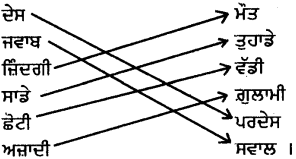
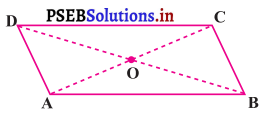


![]()
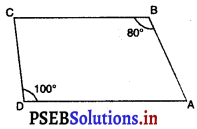
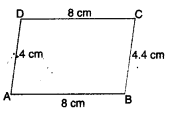
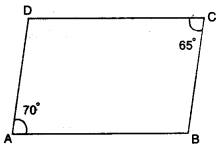
![]()
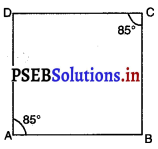
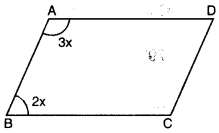
![]()
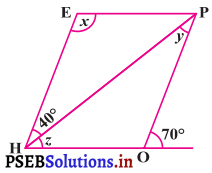
![]()
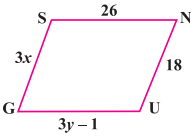
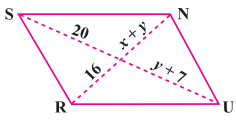
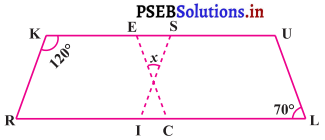
![]()
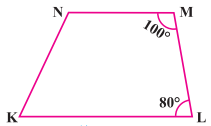
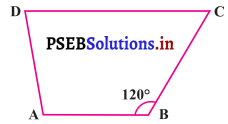
![]()



